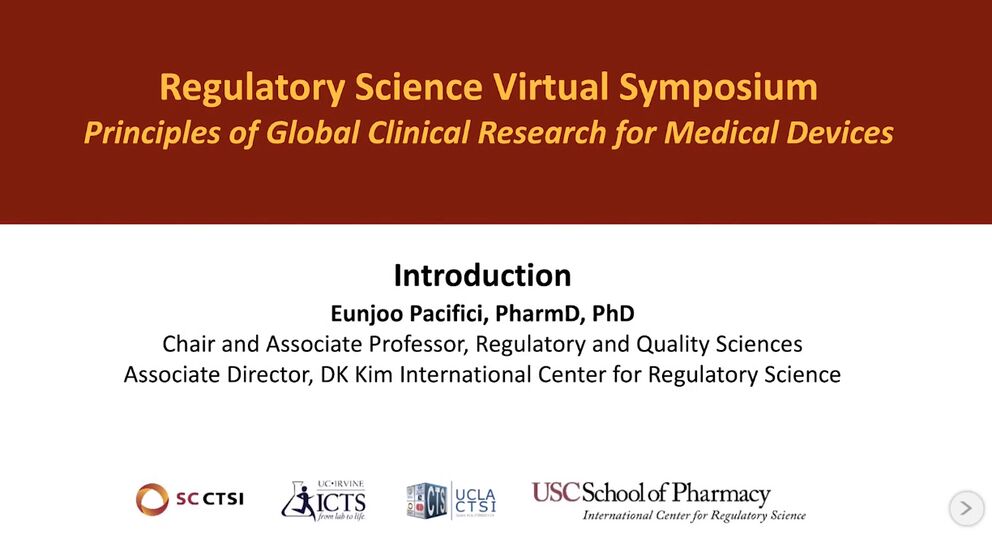1. Clinical Investigation: Value and Key Aspects of the IMDRF Guidance Document
2. Learning Objectives
a. Understand evolution of Good Clinical Practices (GCP) concepts for medical devices
b. Become familiar with history of IMDRF and its clinical documents
c. Recognize link between clinical investigation, clinical evidence, and clinical evaluation
d. Understand value of IMDRF clinical investigation guidance and its links to standards and regulations, using Europe and the US as examples
3. Evolution of GCP concepts for medical devices
a. Partial list of GCP related activities, primarily aimed at drug research
b. Most of these codes were birth post-negative historical events, crises, and tragedies
i. Ex: Nuremberg Code came after the Nuremberg trials and World War II
c. Medical device regulations and requirements
d. European GCP medical device standards
i. During the 1990s, medical devices regulations vary depending on the European region or none at all
ii. Medical Device Directive came into full force approximately 1993
iii. First time a GCP for medical devices was mentioned
e. International GCP medical device standards
f. In 2018, FDA finalized revision of GCP standards for medical devices
4. History of IMDRF and its clinical documents
a. During the late 1980s and the dawn of the 1990s, the need for harmonizing the globally disparate systems for regulation medical devices was discussed intensely and at many important conferences. Each country and region had its own system or no system!
b. Fall of 1192: Global medical device conference in Nice, France
i. Landmark meeting!
ii. Birth of the Global Harmonization Task Force (GHTF)
iii. Founding members: representatives from industry and regulatory bodies from EU, US, Canada, Japan, and Australia
iv. Critical beginning of work on global harmonization of medical device regulatory principles
c. Gordon Higson: Chairman, Medical Technology Consultants of Europe Ltd.
i. Previously Director of UK Department of Health and Social Security (DHSS)
ii. One of the persons responsible for the creation of GHTF
iii. His work: Medical Device Safety, The Regulation of Medical Devices for Public Health and Safety (2002)
d. GHTF active operation from Jan 1992 to late 2011
e. Purple of GHTF: encourage convergence of global medical device regulatory practices
f. Method: publish and disseminate harmonized guidance documents on basic regulatory practices
g. GHTF Study Group 5 – Clinical Safety/Performance
h. GHTF saw it was beneficial to have regulators-only group, which birth IMDRF (International Medical Device Regulators Forum) to build upon work of GHTF
5. Link between clinical investigation, clinical evidence, and clinical evaluation
a. Definitions for these words are from IMDRF guidance document
b. Clinical data and clinical evaluation together make up clinical evidence
6. Value of IMDRF clinical investigation guidance
a. Scope: when a clinical investigation should be undertaken for a medical device to demonstrate compliance with the relevant Essential Principles, general principles of clinical investigations involving medical devices, and acknowledges diversity of medical devices and their associated risks
b. Essential Principles for the EU refers to General Safety Requirements under the Directives
c. General principles when considering the need for a clinical investigation
i. When should a clinical investigation be undertaken?
ii. What are the key considerations in clarifying the need for clinical investigations?
1. Identify which essential principles apply to your product
2. Proper risk management to identify necessary clinical data associated with risks post mitigating initial risks
3. It is not uncommon for clinical trials to be conducted without considering risk management prior to conducting study
ii. There are requirements that any clinical investigation should follow, which is outlined in the General principles of clinical investigation design
d. Ethical Considerations for Clinical Investigations
e. FDA Final Rule
i. Inside the Preamble you will find comments that FDA has gathered and FDA’s response to those comments
7. Key take-aways
a. GCPs have a long history of evolution, that began with pharmaceuticals and finally development of GCPs for medical device investigation
b. Significant efforts on medical device harmonization led to the founding of the GHTF (collaborative effort among industry and regulators)
c. Clinical evidence consists of clinical data and clinical evaluation associated with medical device
d. IMDRF guidance provides key elements upon which to build regulatory requirements regarding the need for and conduct of medical device clinical investigations
Regulatory Science Virtual Symposium: “Principles of Global Clinical Research for Medical Devices” Session 2: Clinical Investigation: Principles from Harmonized Documents (2021)
Regulatory & Quality Sciences
Course Syllabus/Topics
Acknowledgement
Accompanying text created by Annie Ly | Graduate Student, Regulatory Science, USC School of Pharmacy lyannie@usc.edu

